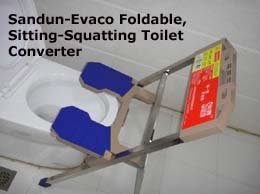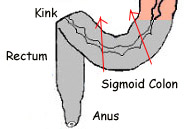|
Pelvic Floor Prolapse – What Every Woman Needs to Know... And Act Upon
Pelvic floor prolapse only occurs in women. It happens when the pelvic floor -- a hammock of muscles and connective tissues stretching across the floor of the pelvis -- weakens and descends, causing the pelvic organs (bladder, uterus, vagina and rectum) to drop and protrude into the wall of the vagina. Some women who suffer a pelvic floor prolapse do not have any symptoms. But many do. The most common sign is a feeling of heaviness or pressure in the area of the vagina, or a sensation of 'something coming down below'. While men can also suffer from pelvic floor disorders, women are especially vulnerable because they have delicate reproductive organs (vagina and uterus) and their pelvic floor is more flexible to allow for childbirth. Our hearts go out to women because so many things can go wrong when their pelvic floor weakens and can no longer support the pelvic organs.
Another heart-rending note from a woman who suffered a pelvic floor prolapse (of the uterus):
SIDENOTE ========================================== A pessary is a small device made of latex or silicone that comes in many different shapes and sizes. It is inserted into the vagina to hold the prolapsed organ(s) in place. It is a stop-gap measure. Once fitted, a pessary must be removed and cleaned with soap and water every month. ==========================================
When the pelvic floor weakens and descends, the pudendal nerve can suffer from stretch injury... If it is damaged, a woman can experience loss of bladder and bowel control, pelvic and back pain, and sexual problems. Like many other colon-related ailments, the incidence of pelvic floor prolapse in Western countries has reached epidemic proportions. The statistics and facts are frightening:
Yet, in sharp contrast, in the developing world, pelvic floor prolapse is rarely seen:
Many doctors and gynecologists are baffled by this. However, there is a simple explanation for the high incidence of pelvic floor prolapse among women in the Western world: sitting toilets. Unlike their counterparts in the West, women (and men) in Asia, Africa and Middle East still perform their bodily functions (including childbirth) in the squatting position. By squatting for waste elimination, a woman would not dislodge her pelvic floor and organs as a result of having to perform the Valsalva Maneuver -- the practice of holding one's breath, and straining and pushing downwards with the diaphragm. By preventing the use of the proper posture for evacuation, the sitting toilet makes it physically impossible for users to evacuate waste easily and effectively because the colon, which is designed with squatting in mind, is in the continence mode.
Likewise, Dr H. Aaron also wrote about the importance of squatting and disadvantages of using a sitting toilet in his book "Our Common Ailment" published in 1938:
The truth is that trying to empty the bowels in the sitting position is like driving a car without releasing the parking brakes. In frustration, and in an attempt to force waste out, one has to hold the breath and strain to push downwards with the diaphragm forcefully. Over time, it can cause a pelvic floor prolapse. SIDENOTE The pelvic floor is not designed to cope with this type of stress. Over time, the muscles, connective tissues and supporting ligaments of the pelvic floor weaken. Gradually, it descends more and more… to a point when it can no longer support and hold up the pelvic organs.
Chiropractor Dr William Welles, in his article The Hidden Crime of the Porcelain Throne (unpublished article), did not minced his words when he described his thoughts about the sitting toilet:
Up to today, the medical establishment has utterly ignored and kept silent about the connection between sitting toilets and pelvic floor prolapse. There could only be one explanation: medical practice relating to pelvic floor prolapse and other disorders is a lucrative business:
 Educating women (and men) about the health threat posed by sitting toilets and the
benefits of squatting
for bowel movements would go a long way to eradicate the scourge of pelvic disorders. But this would also mean the end of a multi-billion dollar industry.
Educating women (and men) about the health threat posed by sitting toilets and the
benefits of squatting
for bowel movements would go a long way to eradicate the scourge of pelvic disorders. But this would also mean the end of a multi-billion dollar industry.
To be fair, the medical establishment cites "frequent straining during bowel movements" as a possible cause. But there is no explanation why there is a need for straining in the first place -- the use of the sitting posture when passing stools. Things are not going to improve anytime soon. The pain and suffering will not go away because sitting toilets are too entrenched in Western society. Increasingly, sitting toilets are also displacing 'primitive' squatting toilets in countries whose peoples have traditionally used the squatting position for waste elimination.

How Squatting Protects Against Pelvic Floor Prolapse In the squatting position, a woman does not need to exert and strain as the colon is prepared and aligned for quick expulsion of waste. Instead of pushing downwards with the lungs, she 'pushes' upwards with the thighs, in the following way: The right thigh helps to seal the colon and pushes wastes in the cecum upwards into the ascending colon. The left thigh supports and pushes up the
sigmoid colon
to open up the natural kink where it joins the rectum, making it easy for waste to flow to the rectum.
The sitting toilet ignores all above natural requirements of waste elimination. The straining and pushing downwards stresses and progressively weakens the pelvic floor. It is shame so many women have to endure so much pain and suffering, because they are not aware of the underlying cause of the growing epidemic of pelvic floor disorders. As with all other illnesses, the best option is to prevent pelvic floor prolapse in the first place… simply by squatting for bowel movements. However, if you have been using sitting toilets for many years, you might find it difficult to squat, as explained on this page on squatting facets. Having to squat may seem daunting, but it can be done. With regular practice, you can regain the ability to do so, and reap the benefits it brings. You can experience easier and comfortable waste evacuation without the need to strain. Moreover you would protect yourself against pelvic floor prolapse. I wish to share with you a real-life case that can provide hope to countless millions of women who suffer pelvic floor prolapse.
Dr. Akilah El, ND, PhD, is a naturopath with a deep understanding (and personal experience) of gynecologic pathology. In 1991, while she was still a student, she was diagnosed with cervical cancer and uterine fibroids. Ignoring the dire warnings of her gynecologist, she cured herself without the use of drugs, surgery or radiation. A key factor in her recovery was the adoption of the squatting posture for elimination. This relieved the pressure on the pelvic floor and allowed the pudendal nerve to repair itself. In this way, the pelvic organs were reconnected to the central nervous system -- the energy and intelligence that protects us from disease. Dr. Akilah has repeatedly verified the effectiveness of this simple lifestyle change in helping her patients resolve gynecological ailments. The results have convinced her that "98% of all hysterectomies are unnecessary and dangerous."
[More information about Nature Knows Best...]
When it comes to pelvic floor prolapse, the best strategy for protection is prevention -- simply by choosing to squat for bowel movements. There are two things you would need in order to do this. You must be able to squat. And you need a squatting toilet. But if you don't have a squat toilet, there are four ways in which you can
'convert' your sitting toilet to a 'squatting' one.

Additional Reading The Roadmap To Colon Health
Have A Great Story About This Topic?Do you have a personal account about the topic discussed on this page? Please consider sharing it. You can be sure that many people in the world would love to read about and greatly benefit from your experience. It's easy to do. Just let your words flow. Thanks for sharing! What Other Visitors Have SaidClick below to see contributions from other visitors to this page...
References: Pelvic floor prolapse
|
The Best Toilet Converter in The World Today!


Helping People All Over
The World Achieve
Good Health Through
Correct Toileting Posture
Watch video on the
origin and story of
the Sandun-Evaco
toilet converter
All about Life,
Hope and Truth...
FREE:
One of the most
astounding books
you will ever read
in your life!











